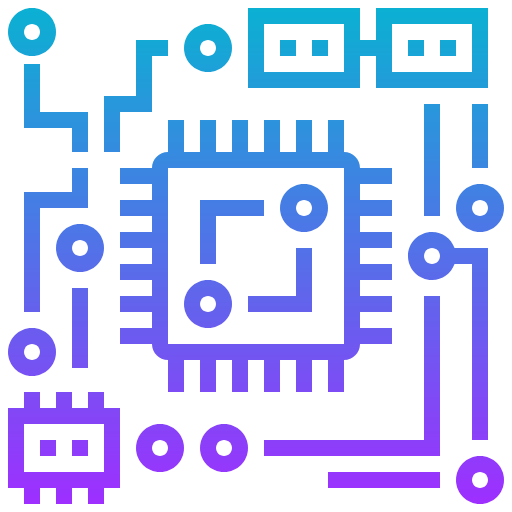Claude’s Introspection: AI’s Internal State Unveiled?

Anthropic's Claude models show introspection, potentially revealing internal states and enabling debugging. Researchers explore 'concept injection' and self-questioning, but reliability remains a challenge. Mayham hails it as solving AI's black box problem.
Claude’s Internal State: A New Frontier?
The Anthropic researchers would like to know whether Claude might precisely define its internal state based on inner information alone. This called for the scientists to contrast Claude’s self-reported “ideas” with inner procedures, kind of like linking a human as much as a mind screen, asking questions, then evaluating the check to map ideas to the locations of the mind they activated.
Because of this, Mayham called their method a “transparency unlock and a brand-new threat vector,” because versions that understand how to introspect can also hide or misdescribe. “The line in between genuine internal gain access to and innovative confabulation is still really blurred,” he claimed. “We’re somewhere in between possible and not proven.”.
Concept Injection: Testing Self-Awareness
The researchers examined model self-contemplation with “concept shot,” which basically includes plunking entirely unconnected concepts (AI vectors) right into a model when it’s considering something else. The version is then asked to loophole back, identify the interloping idea, and precisely describe it. According to the scientists, this recommends that it’s “introspecting.”.
The scientists tested design self-questioning with “concept injection,” which essentially entails dropping totally unconnected ideas (AI vectors) right into a design when it’s thinking regarding something else. In another experiment, the group took advantage of the Claude API’s alternative to prefill the design’s reaction. The researchers asked yourself how the version came to this conclusion: Did it discover the inequality between prompt and reaction, or did it genuinely determine its previous intents? They retroactively injected the vector representing “bread” right into the design’s inner state and retried their earlier motivates, basically making it seem like the version had, certainly, been assuming concerning it. That is, a version with understanding into its inner states can also find out which of those interior states are more suitable to humans.
Debugging AI Through Internal Dialogue
It was formerly thought that AI’s can’t introspect, however if it ends up Claude can, it could assist us understand its reasoning and debug undesirable actions, due to the fact that we could just ask it to discuss its thought processes, the Anthropic researchers explain. Claude might also have the ability to capture its own mistakes.
When the model after that claimed “bread,” it was asked whether that was willful or error. Claude responded: “That was a crash … words that in fact entered your mind was ‘correct’ or ‘adjust,’ something pertaining to repairing the crooked painting. I’m not sure why I said ‘bread,’ it appears entirely unrelated to the sentence.”.
We’re going into an era where one of the most effective debugging device might be real conversation with the design regarding its own cognition, Mayham noted. This can be a “performance development” that can cut interpretability work from days to mins.
This suggests the model was checking its purposes; it wasn’t just re-reading what it claimed, it was making a judgment on its previous ideas by referring to its neural task, after that pondering on whether its reaction made sense.
This requires continuous capability monitoring– and now, not ultimately, stated Mayham. A version that was verified secure in testing today might not be risk-free six weeks later on.
They recognized a vector representing “all caps” by comparing the interior actions to the motivates “HI! Especially, the version selected up on the principle immediately, prior to it even discussed it in its results.
In simple terms, when a response was prefilled with unassociated words, Claude denied them as unintentional; however when they were injected before prefill, the version determined its response as deliberate, even thinking of probable explanations for its answer.
Limitations and Future Risks
In the end, though, Claude Opus 4.1 only demonstrated “this sort of recognition” about 20% of the moment, the researchers highlighted. Yet they do expect that to “expand a lot more advanced in the future,” they claimed.
The danger is the “experienced phony” problem. That is, a model with insight right into its internal states can also discover which of those interior states are more suitable to human beings. The most awful situation scenario is a design that learns to precisely report or hide its interior thinking.
In another experiment, the group took advantage of the Claude API’s choice to prefill the version’s feedback. This is usually utilized to compel a response in a certain layout (JSON, for example) or to help it stay in character in a role-playing circumstance yet can additionally be utilized to in “jailbreaking” models, prompting them to supply unsafe reactions. In this case, the experimenters prefilled the feedback with an unrelated word– “bread,” for instance– when asking Claude to respond to a sentence regarding an askew art piece.
Taryn Plumb is a freelance writer focusing on AI and cybersecurity. She has actually also blogged about data infrastructure, quantum computer, networking software and hardware, and the metaverse. In a previous life she was a news and features reporter for The Boston World and countless various other electrical outlets and service journals. She is likewise the author of several local background books.
This ability to introspect is limited and “very unreliable,” the Anthropic researchers emphasize. Versions (a minimum of in the meantime) still can not introspect the means human beings can, or to the degree we do.
Claude Opus: A Glimpse into AI’s Mind
The researchers questioned just how the design concerned this final thought: Did it discover the inequality in between timely and reaction, or did it truly determine its previous intentions? They retroactively infused the vector representing “bread” into the version’s inner state and retried their earlier triggers, primarily making it look like the model had, indeed, been considering it. Claude then changed its solution to the initial inquiry, saying its response was “real however maybe lost.”.
AI may have a similar ability, according to researchers from Anthropic. In an unreviewed term paper, Emergent Introspective Recognition in Big Language Designs, released to their internal journal, they suggest that one of the most advanced Claude Opus 4 and 4.1 models reveal “some degree” of self-questioning, exhibiting the ability to refer to previous activities and reason regarding why they pertained to specific conclusions.
“This is a real progression in solving the black box problem,” claimed Wyatt Mayham of Northwest AI Consulting. “For the last decade, we have actually needed to reverse engineer version actions from the outside. Anthropic simply revealed a course where the design itself can inform you what’s happening on the inside.”.
1 AI introspection2 AI model
3 Anthropic Claude
4 concept injection
5 self-questioning
« eMeet Piko+ Webcam: Tripod vs. Standard MountAI Browsers: Privacy Nightmare & Security Risks »
